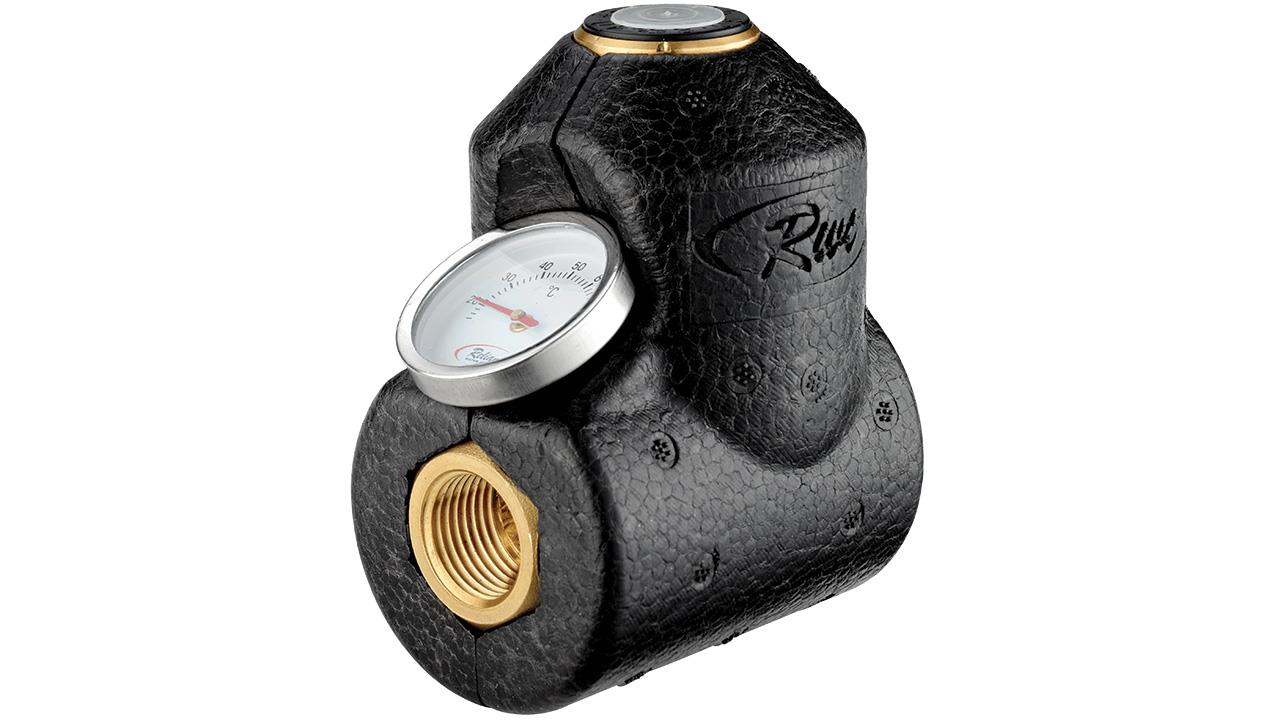

Richard Bateman, Product Marketing Manager at RWC, discusses the role thermal balancing valves play in designing a safe and efficient commercial plumbing system.
Hot water systems are crucial to commercial and healthcare buildings. With hundreds of people reliant on instant hot water, whether it’s to wash hands, shower, or use for cleaning, it is important to ensure the supply is safe for use and delivers energy efficiency. Thermal balancing valves (TBVs) are one such solution that can enable safe and sustainable operation of these systems.
TBVs are designed to automatically balance the hot water and maintain consistent temperature throughout the circuit, by dynamically adjusting the flow rate. These valves force the water that is above the set temperature to other parts of the system that are operating at lower temperatures. This prevents legionella growth and hot spikes that can damage other components or cause scalding.
As well as making hot water systems safer for use, TBVs also bring energy efficiencies by putting less stress on the boiler. Meanwhile, if the system is thermally balanced, the users can access hot water as soon as they open the tap. However, if the system isn’t properly balanced, users have to wait for hot water to reach the outlet by keeping the tap turned on, which leads to unnecessary water wastage.
How?
As discussed, TBVs essentially circulate consistently hot water throughout commercial systems. Overall, this results in efficient and sustainable use of energy and water and reduces the need for frequent maintenance.
Usually secondary hot water returns are pre-set to 65-70°C, or even higher, to stop legionella growth. So, an effectively balanced system ensures that all outlets get constant hot water, regardless how close or far they are from the boiler.
TBVs use a thermostatic element to adjust the flow rate of hot water depending on its temperature. As the temperature gets closer to the set point – which is usually 70°C – the TBV shuts off, in order to restrict the flow of hot water coming from the boiler. This helps in maintaining the temperature in the circuit by forcing hot water to other parts of the system that have a lower temperature.
Where?
Thermal balancing valves should be installed on returning legs of the pipework to avoid creation of dead legs of uncirculated hot water. These valves can be installed for a single outlet or to control a group of terminal fittings fed from a branch linked up to the hot water system, for example, a group of basins.
TBVs are designed to balance the entire hot water network, therefore individual valves should be installed at every hot water draw off area. For example, if there are 100 rooms in a hotel, a TBV should be installed in each room. This will ensure a constant temperature across the circulating loop, no matter where you are in the building.
One of the commonly found errors around the installation of TBVs is when they are placed on the return pipework that is closest to the boiler to act as a regulating valve. This results in a non-balanced circuit, as water does not get forced to areas of the system that is at a lower temperature. Instead, it means the boiler has to work harder to spike water temperatures to get hot water to areas that are furthest away.
TBVs can successfully eliminate temperature spikes and balance the circulating hot water network, however, thermostatic mixing valves (TMVs) are recommended at the serving outlets to ensure there is protection against scalding.
Bringing balance
Locations such as hotels, gyms, or hospitals have a high demand for instant hot water. However, it’s critical to ensure safe temperature from outlets to prevent scalding accidents. HTM 04-01 gives advice and guidance on the design, installation, operation, and maintenance of controls and appliances in healthcare properties.
So, to ensure end-user safety in such buildings, TMVs, or thermostatically controlled showers and taps, are installed after TBVs to achieve safe temperature from outlets. However, large systems are prone to big temperature fluctuations, which can be as high as 80°C or more. This excessively high inlet temperatures can affect the performance of TMVs and thermostatic fixtures, as the seals aren’t often rated to work at such extreme temperatures, even intermittently. So, an unbalanced circuit can cause other safety valves to fail, thus increasing the chances of scalding.
TBVs stabilise the water supply and minimise chances of hot spikes to prevent the failure of other safety valves, and protect the pipes, valves, and fittings on the system from corrosion.
Alongside this, TBVs also protect the system from water stagnation and legionella growth, by ensuring that the water is constantly flowing throughout the circuits.
What to look for
When specifying a TBV, it is important to take the performance, ease of installation, and maintenance into consideration. This will not only minimise initial installation time, but also reduce overall service and maintenance costs in future.
Other factors to bear in mind while specifying or installing TBVs are:
Maintenance is key
For any hot water system to provide appropriate temperature control, it is crucial to carry out regular cleaning and servicing. The piston and thermostat assembly of TBVs can accumulate dust over time, which can result in inadequate system performance. Therefore, we strongly advise that installers keep a record of service timelines, and only use WRAS-approved solutions to clean these types of components.
As highlighted in this article, TBVs play a crucial role in commercial hot water systems. A balanced system is instrumental in providing optimum performance, safeguarding the end-users, and realising energy efficiencies.
Balancing hot water systems in large scale buildings can present its own set of challenges, meaning it is worthwhile approaching manufacturers to get practical advice.
If you'd like to keep up-to-date with the latest developments in the heating and plumbing industry, why not subscribe to our weekly newsletters? Just click the button below and you can ensure all the latest industry news and new product information lands in your inbox every week.